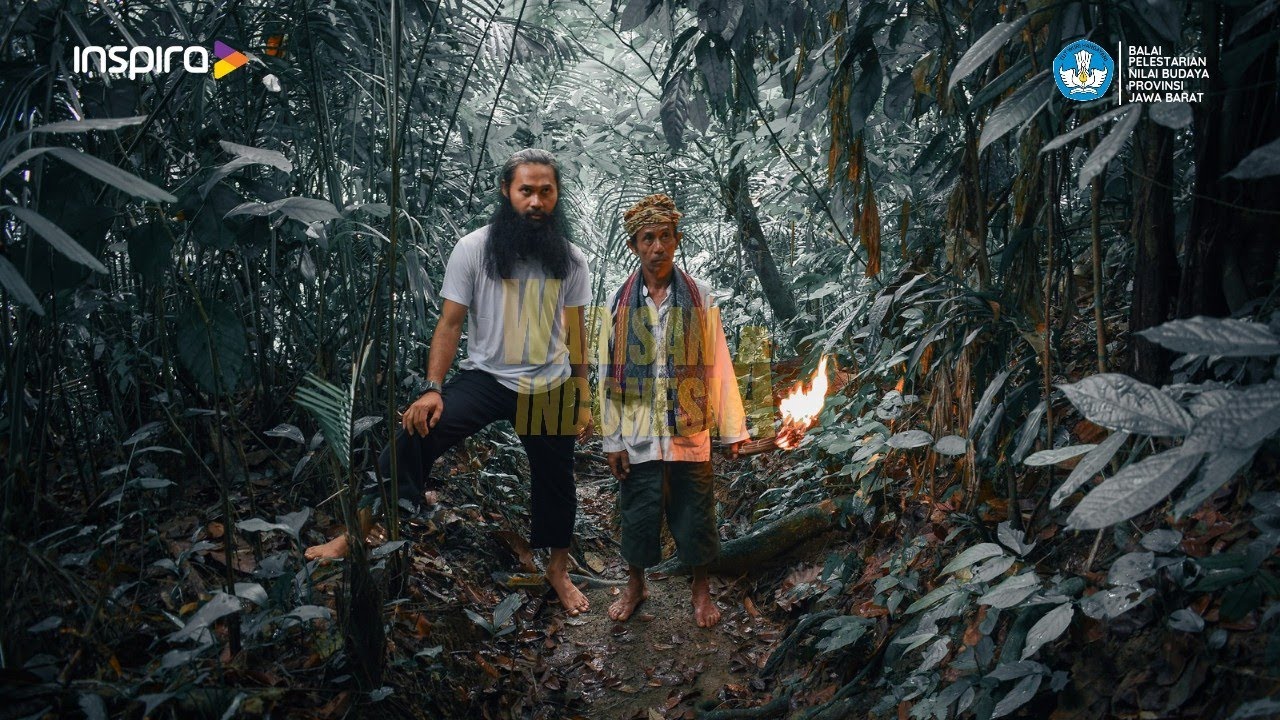Permainan Tradisional Jawa Barat - Peupeusingan
Summary
TLDRThe video explores a traditional children's game from West Java, Indonesia, called 'Pepesingan.' The game, inspired by the behavior of a pangolin (known as 'trenggiling' in Indonesian), uses everyday materials like sarongs and cloth to create a playful imitation of the animal. Children, mainly girls, would create a triangular shape with fabric, and then chase and scare each other, mimicking the pangolin's movements. Through this game, children connect with nature, learning about animals and their environments while fostering creativity and community engagement. The game also nurtures an early appreciation for wildlife and local ecosystems.
Takeaways
- 😀 The game 'pepusingan' is derived from the word 'pusing', referring to a spinning motion.
- 😀 'Pepusingan' is inspired by the shape and behavior of a pangolin, known as 'trenggiling' in Indonesian.
- 😀 Pangolins are gentle animals found near water sources like springs, where children used to encounter them.
- 😀 The game was traditionally played by children in West Java, using local materials like sarongs or cloths.
- 😀 The game involved children creating a spinning shape that mimics a pangolin using cloth, forming a triangular shape with their hands.
- 😀 The purpose of the game was to replicate the movement of a pangolin by spinning and chasing other children.
- 😀 Although the game was mainly played by girls, boys also participated in it.
- 😀 Children would chase each other, with one child playing the 'pangolin' and the others trying to avoid being caught.
- 😀 The game allowed children to engage with and learn about nature, fostering an understanding of local animals like the pangolin.
- 😀 Through playing 'pepusingan', children not only had fun but also developed a deeper appreciation for the natural world and its creatures.
Q & A
What is the origin of the word 'pepusingan' in the context of the game described?
-The word 'pepusingan' comes from the Indonesian term 'pusing,' which refers to dizziness or spinning. The term is linked to a game where children imitate the movement of a pangolin (trenggiling) by spinning around.
What animal is referenced in the description of the game, and why is it significant?
-The animal referenced is the pangolin (trenggiling), which is significant because it is known for being docile and commonly found near water sources. Its behavior and form inspired the children's game.
Where did children typically play this game?
-Children typically played this game near water sources, such as springs or riverhead areas, where pangolins were often found.
Why is the pangolin described as an important part of the game?
-The pangolin is important because its gentle and harmless nature inspired the children to recreate its movement in the game. They mimicked the animal's behavior, using cloth to represent its form and motion.
What materials did children use to create the 'trenggiling' form in the game?
-Children used readily available materials such as sarongs or wide cloths to form the shape of the pangolin, often folding the cloth into a triangular shape to represent the animal.
Who typically played the game, and what role did gender play in this?
-The game was mostly played by girls, though boys also participated. The game involved mimicking the agile movement of the pangolin, which was more commonly associated with the girls' physical play activities.
How did the children play the game once the 'trenggiling' shape was created?
-Once the 'trenggiling' shape was formed, the children would spin and chase one another, with one child playing the role of the pangolin while the others ran and tried to avoid being 'caught.'
What was the educational value of the game in terms of the children's relationship with nature?
-The game served as a way for children to engage with and learn about nature. Through mimicking the pangolin, they developed a deeper understanding and appreciation for local wildlife and the environment.
What is the broader significance of games like this in terms of cultural and environmental education?
-Games like this are important because they teach children about their natural surroundings in a playful and engaging way. These types of games can foster a sense of connection to nature and cultivate environmental stewardship.
How does the game reflect the children's creative interaction with their environment?
-The game reflects the children's creativity by transforming everyday materials, such as cloth, into representations of animals, allowing them to interact with and learn about their environment through play and imagination.
Outlines

此内容仅限付费用户访问。 请升级后访问。
立即升级Mindmap

此内容仅限付费用户访问。 请升级后访问。
立即升级Keywords

此内容仅限付费用户访问。 请升级后访问。
立即升级Highlights

此内容仅限付费用户访问。 请升级后访问。
立即升级Transcripts

此内容仅限付费用户访问。 请升级后访问。
立即升级浏览更多相关视频

Pelestari Permainan Tradisional

Wajib Dicoba! Inilah 10 Makanan Khas Jawa Barat

Tari Jawa Barat/ part 2/Tari Indonesia/Tari Nusantara/Tari tradisional Indonesia

HUTAN KERAMAT DI KAMPUNG ADAT KUTA | WARISAN INDONESIA SEASON 2

Mengenal Kebudayaan Jawa Barat . Sistem Kehidupan Orang Sunda Dari Bahasa Hingga Kesenian

Menyelami Seni Karawitan Sunda
5.0 / 5 (0 votes)
